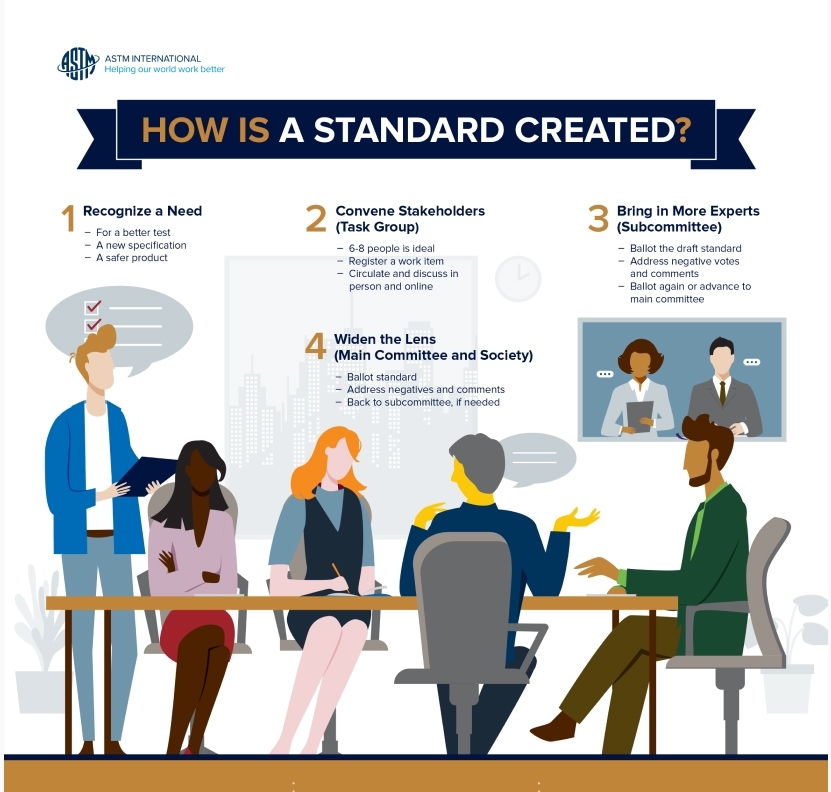Using Artificial Intelligence (AI) on ASTM standards and related intellectual property is prohibited. Violations will result in suspension of access.

It’s not enough that things should just work safely. To raise performance, ASTM’s standards also help things work appropriately, efficiently, and profitably. To ensure our standards combine market relevance with the highest technical quality, businesses, governments, and consumers collaborate openly and transparently in our standards-setting committees. All have an equal voice in determining a standard’s content.
Some ASTM technical subcommittees are formed primarily to work on one standard, while others continue to develop a set of standards for a material, product, system, or service. The average time for the development of a new standard is 18 months. Revisions to existing standards can be approved in six months or less. The development time is largely dependent on the urgency of need and the extent to which the volunteer members are willing to move things forward. Once approved, ASTM standards are reviewed at least every five years and removed from publication if not revised or reapproved after eight years.
Working with other technical committee members, consumer representatives propose and comment on the wording of a draft standard. Committee members may also undertake or participate in research on specific issues. Ultimately, as committee members, consumer representatives vote to approve or disapprove standards the committee develops. All technical changes to an ASTM standard must achieve full consensus through the official balloting process before they can be approved and published.
For a standard to be published as an ASTM International standard, the document must successfully move through our rigorous development and balloting process. Balloting begins within a subcommittee before moving to the main committee where all committee members have an opportunity to vote. It then moves on to the Committee on Standards (COS) to ensure proper procedures were followed and due process achieved, and finally to a Society (public) review. If the standard passes all levels of balloting, it is officially published.
By keeping everyone to the same standard, users of a product or service are given a recognizable point of reference. For businesses, the equality our standards generate is key to
increasing productivity and maximizing resources. Manufacturers and innovators know absolutely what a standard requires of them, making product development a more viable and efficient process. Consumers have a minimum baseline of what to expect regarding performance, quality, and safety.
· Self-confidence and willingness to present a viewpoint even if it is a minority view
· Good critical-thinking and verbal skills
· Curiosity and willingness to learn new things
· Has time to devote to preparation, travel, and participation
· Is self-motivated and disciplined
· General understanding of how committees and organizations work
· Is comfortable with receiving and absorbing new information
· Is comfortable with asking questions
· Has a willingness to follow through with a project that may last months or years